Math 121: Calculus II Fall 2014
|
Math 121: Calculus II Fall 2014 |
|
Prof. Rafe Jones
MW 8:30-9:40, F 8:30-9:30 in CMC 301
Textbook: Calculus: early transcendentals, 2nd edition, by Jon Rogawski. |
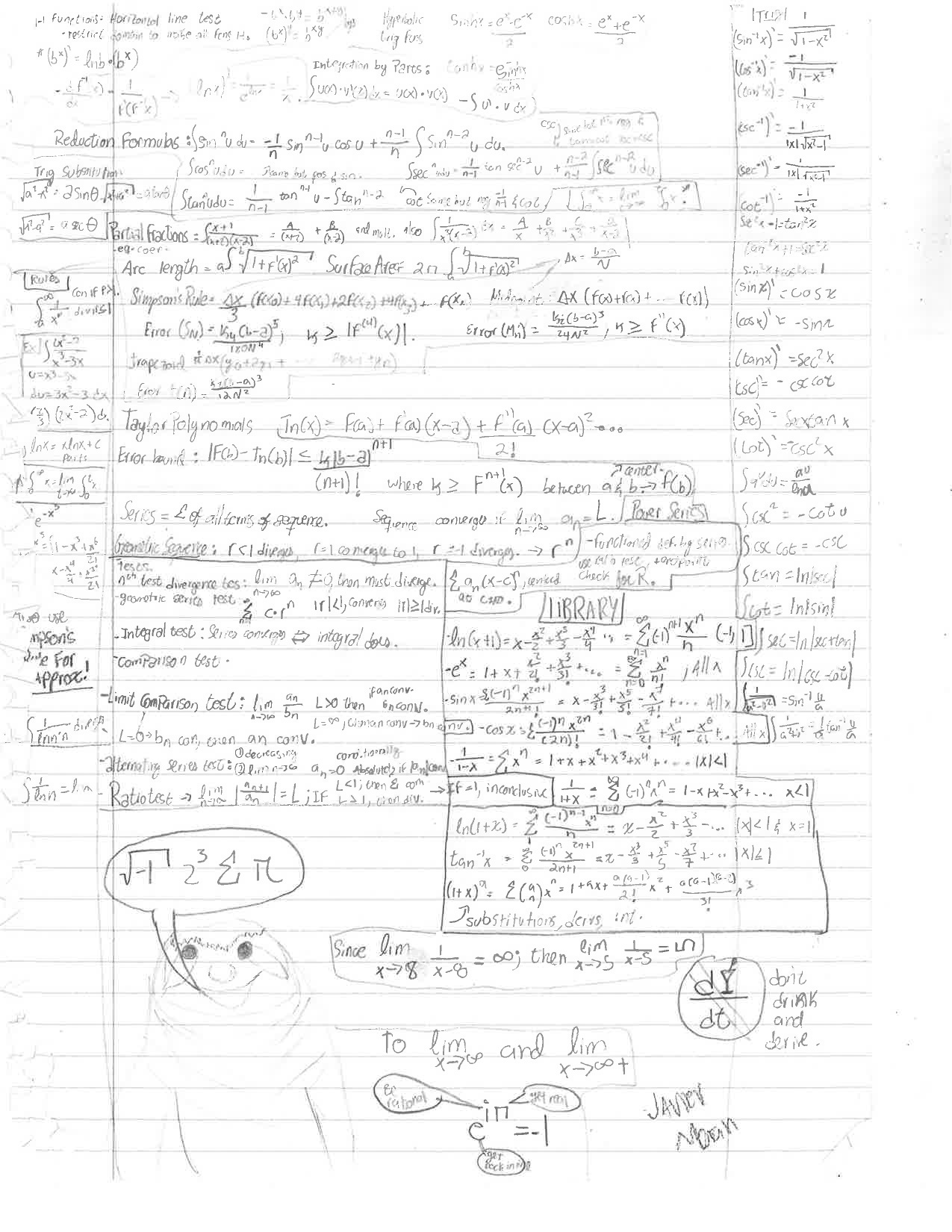
This one wins for best funky-looking symbols:
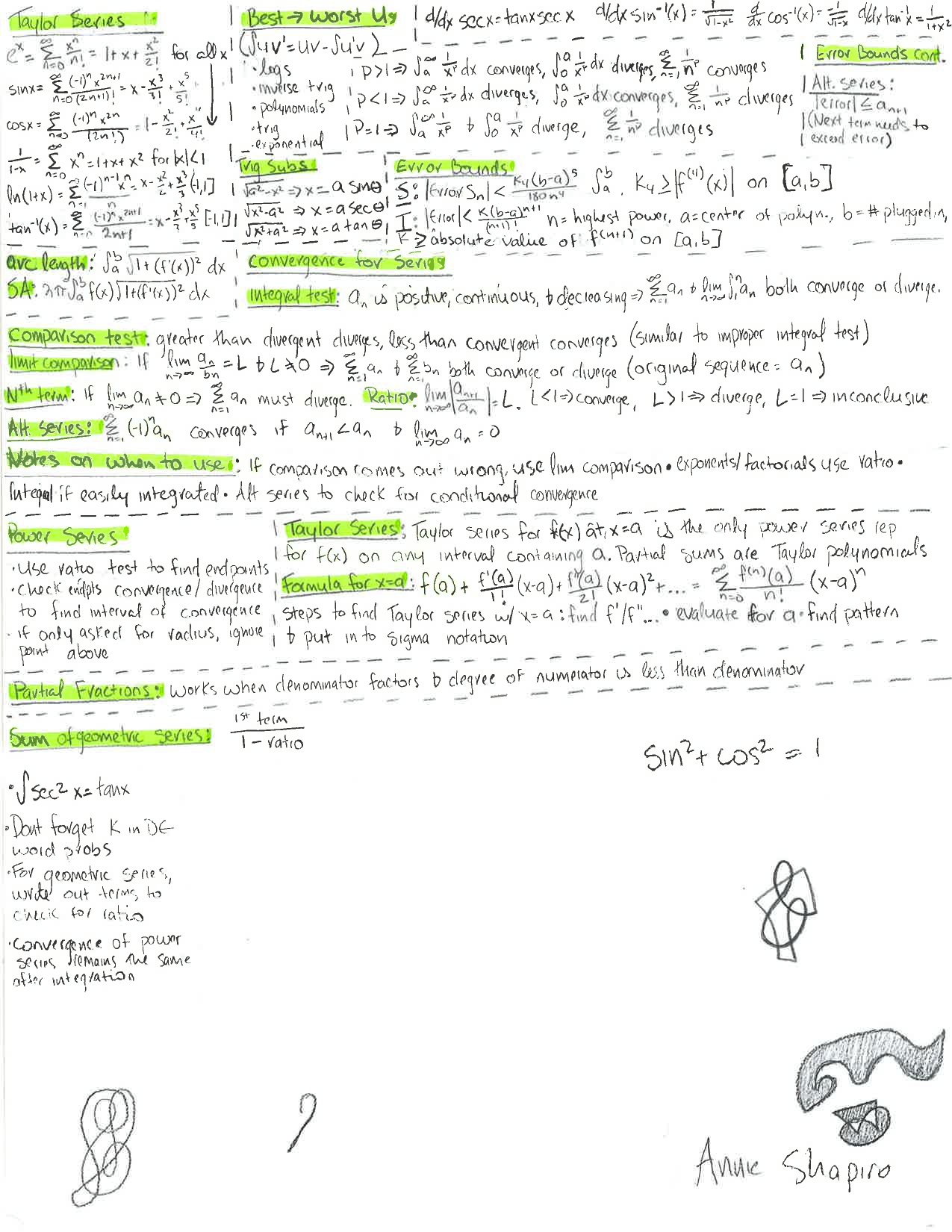
This one wins the modern art award, with its one line snaking through the middle:
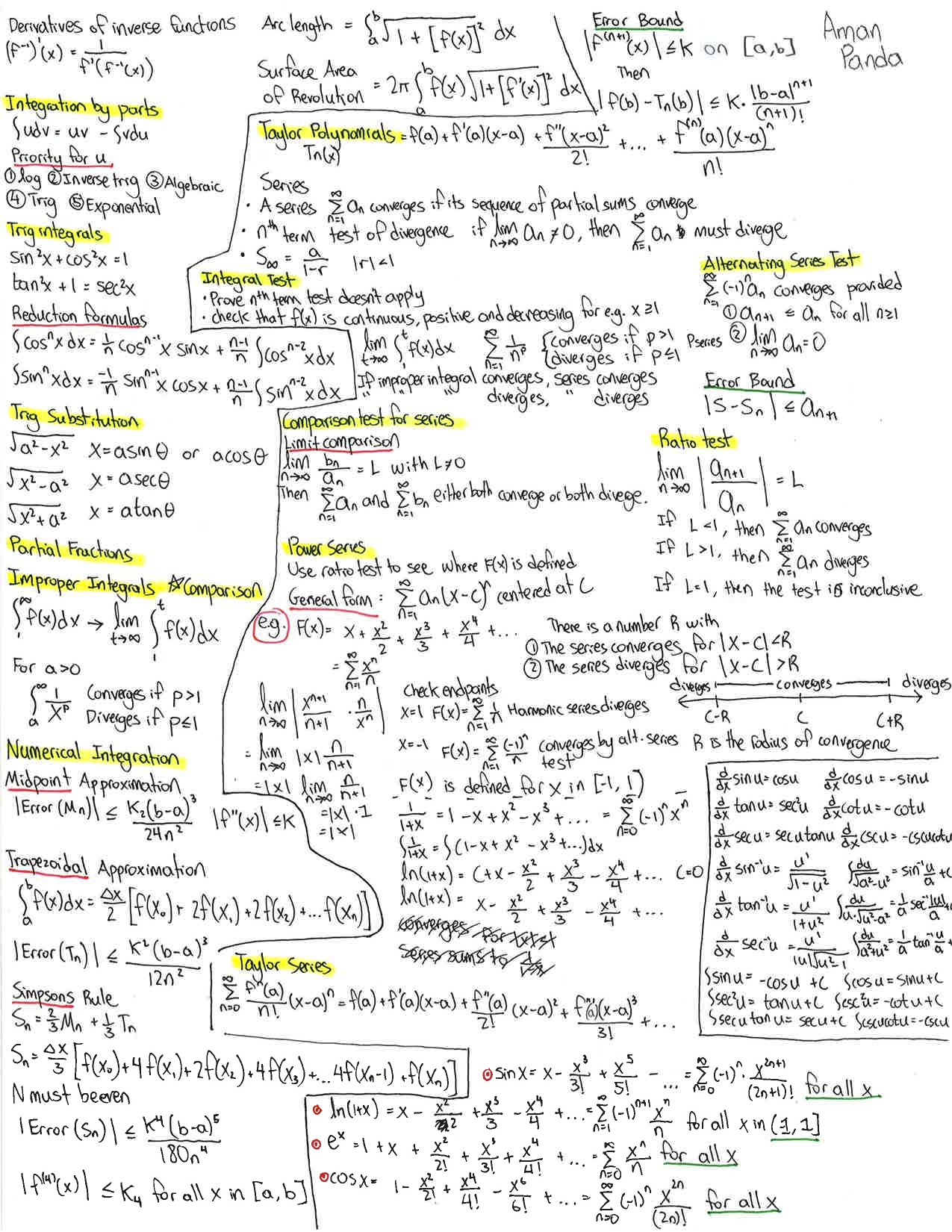
Two stand out for their colors: one subtle and the other, well, loud:
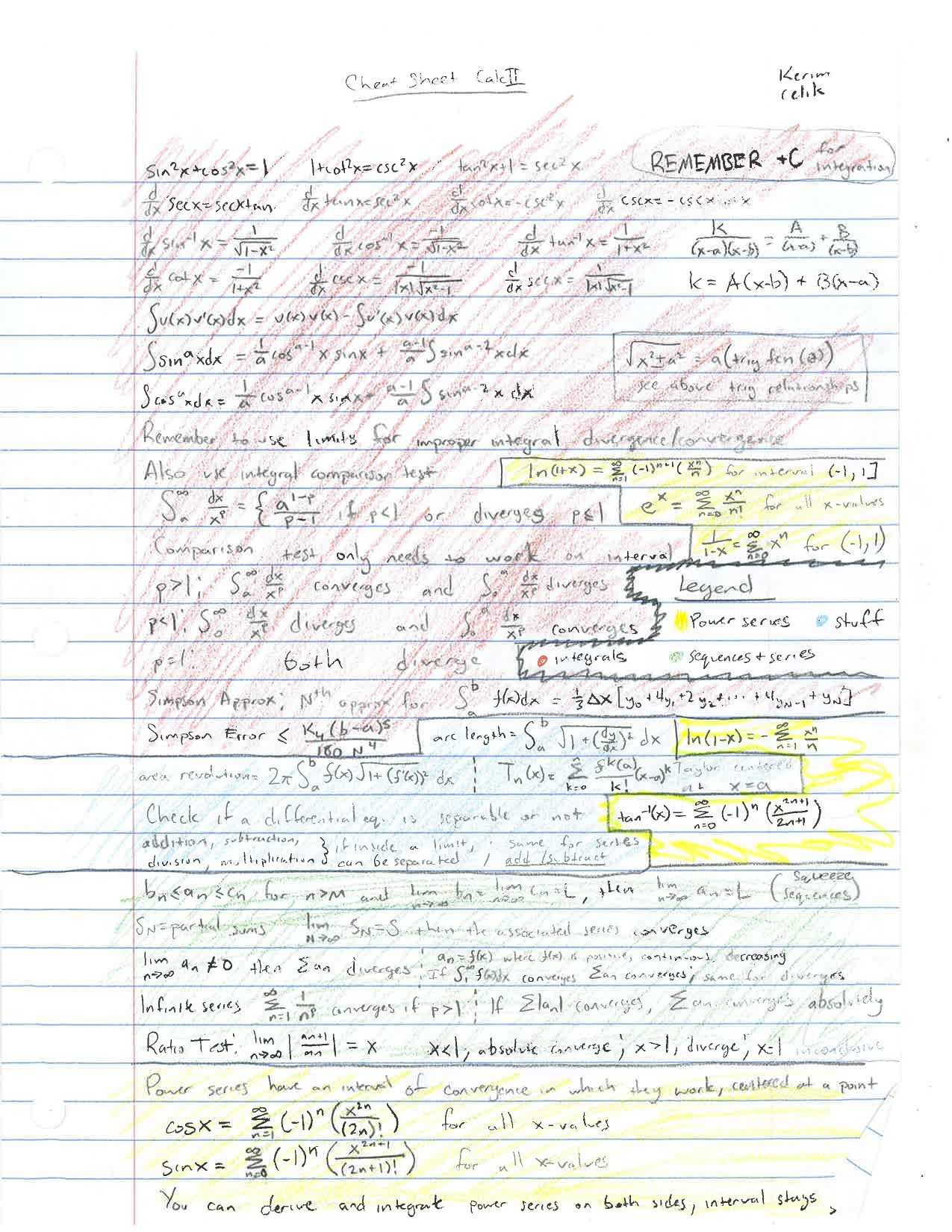
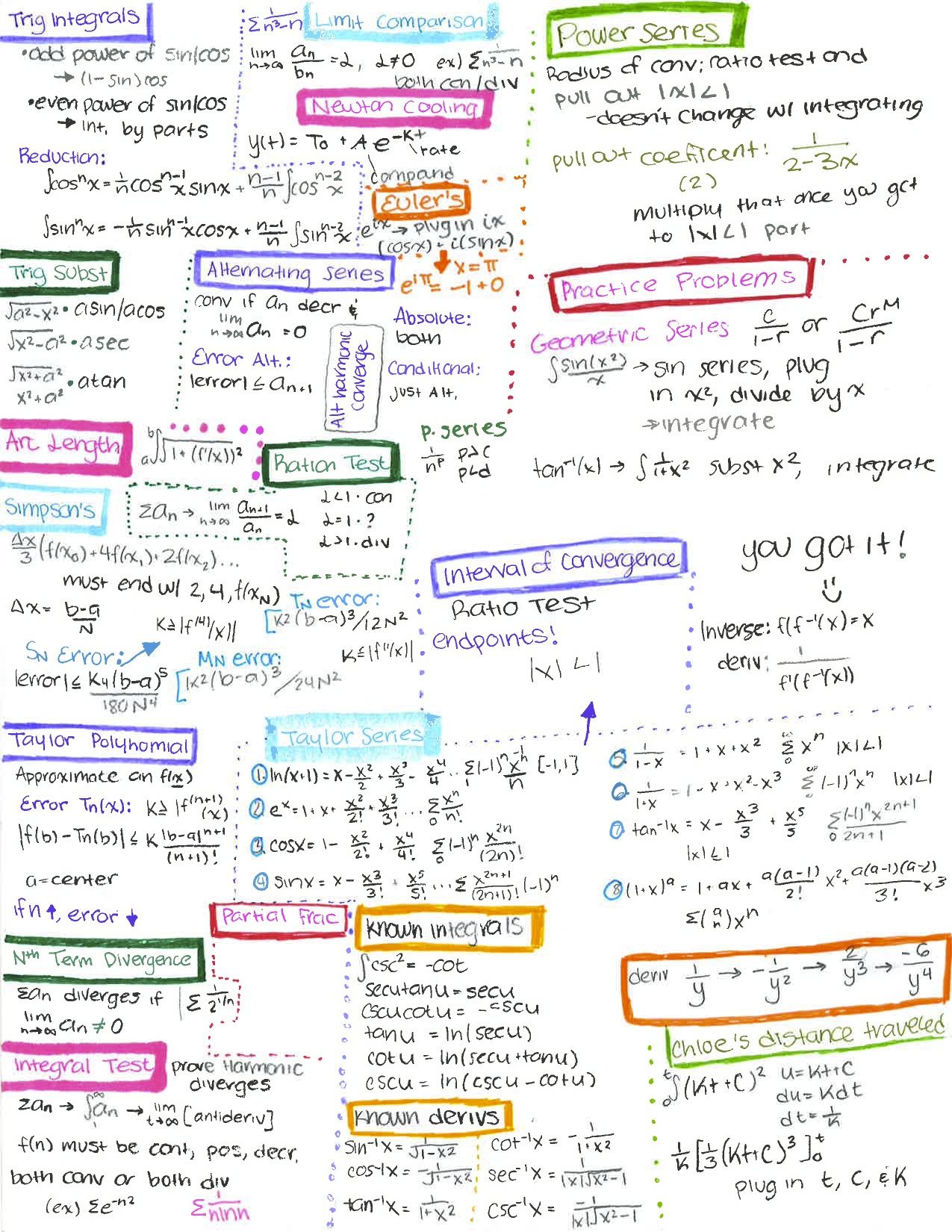
This one has appealing right angles, as well as an alluringly blank block:
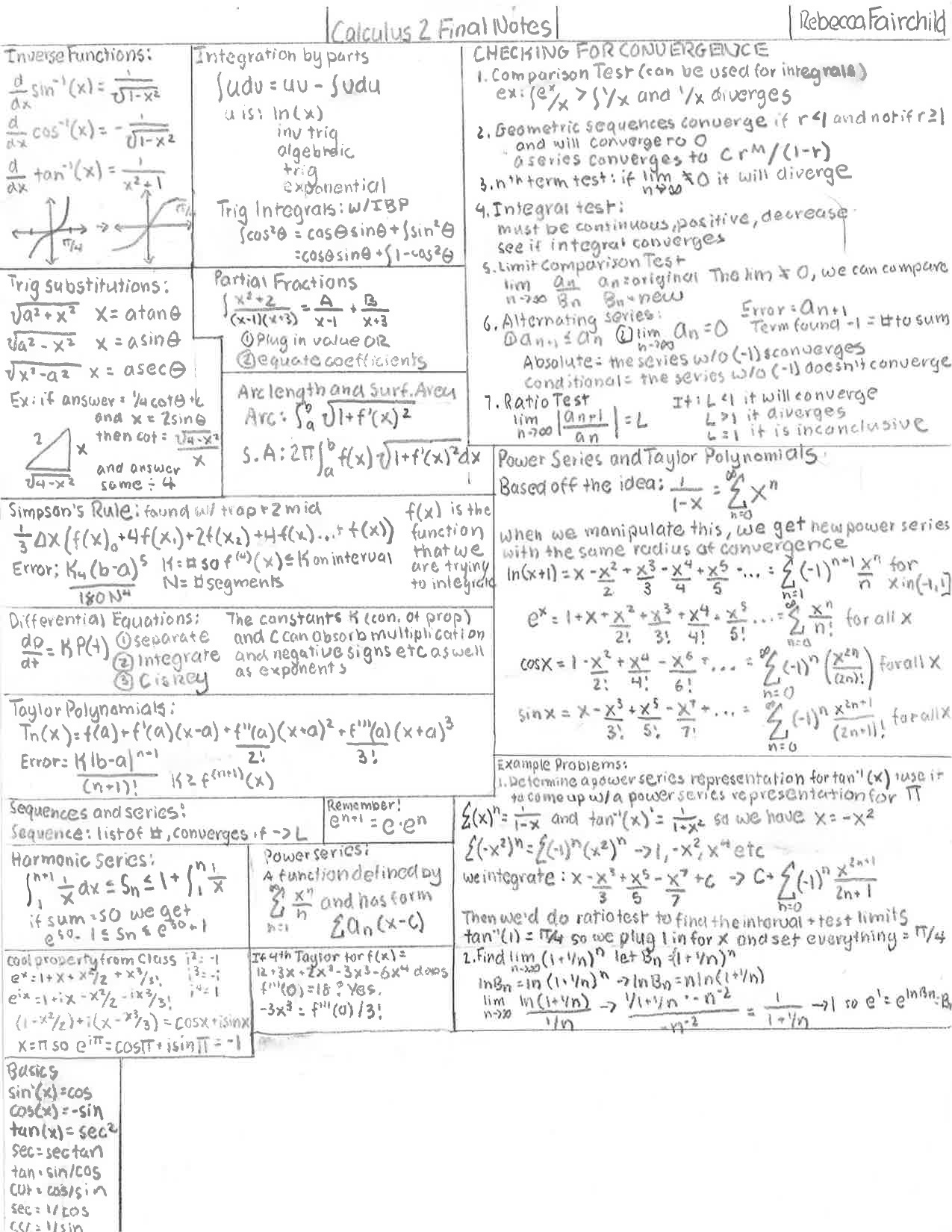
This one has several fun hidden decorations:
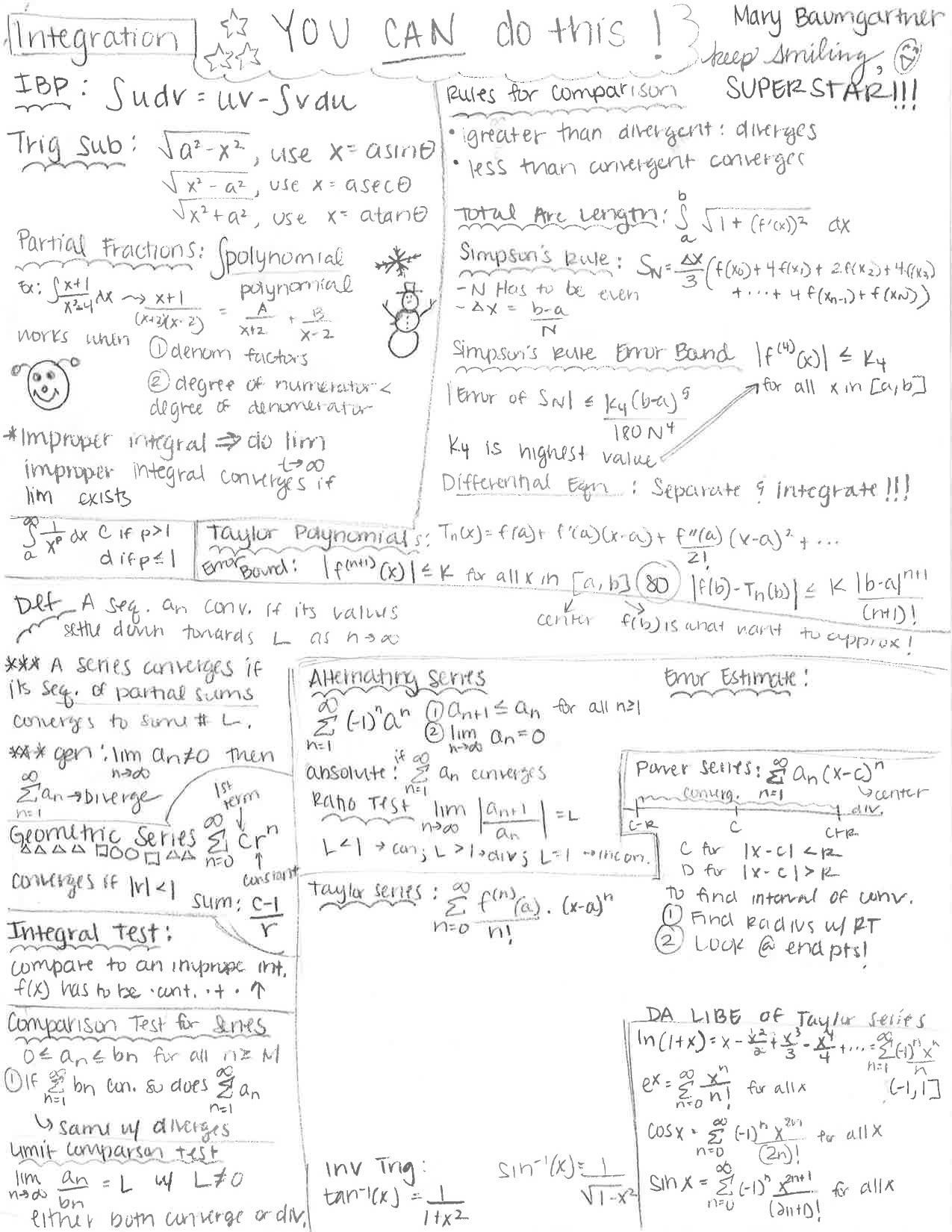
This one wins for most compartments, as well eye-grabbing green highlighting:
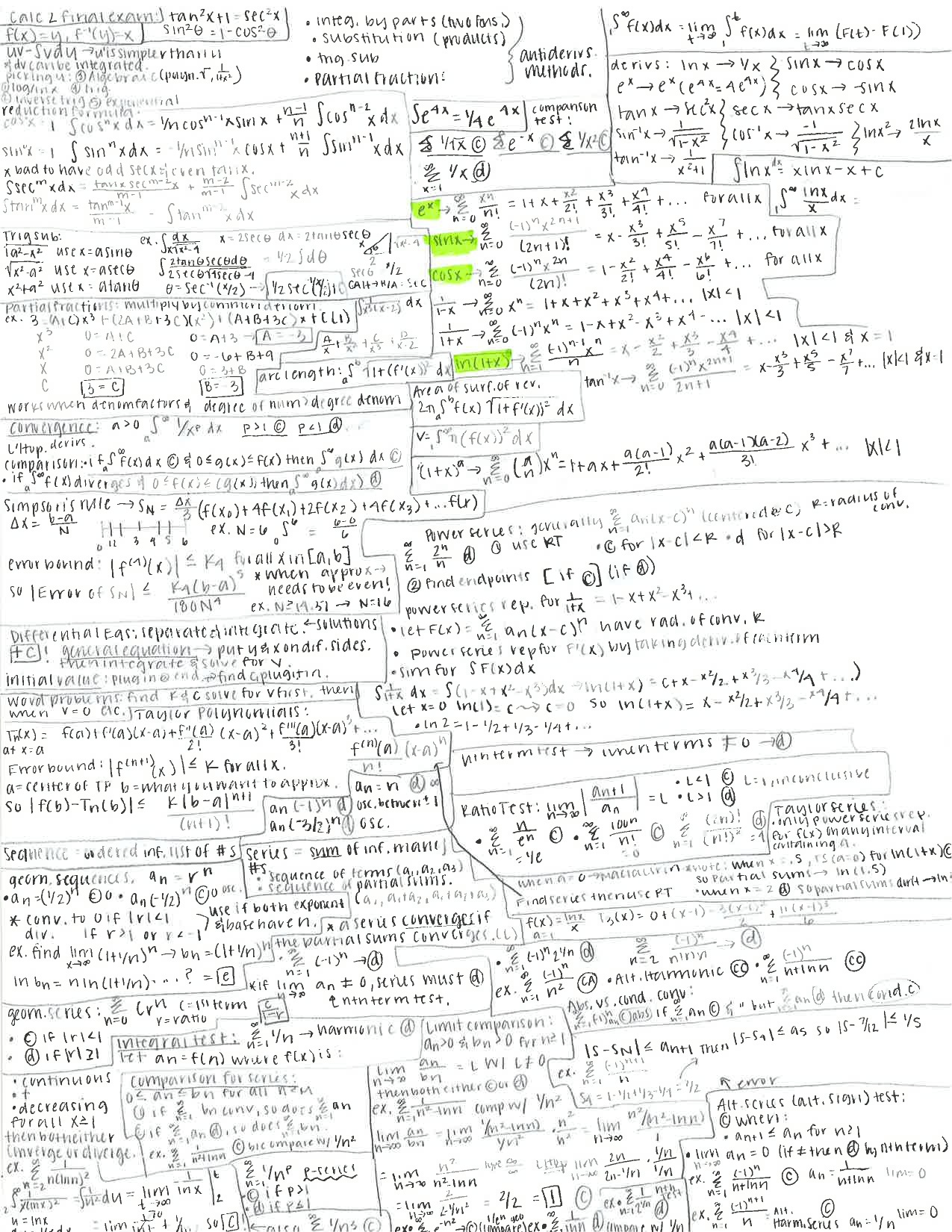
Review session: Sunday 1-3 in CMC 301.
Office hours: Thursday 2-4, Sunday 3-5, Monday 5-6.
The final will be approximately twice as long as the midterms, though you'll have 2.5 hours in which to do it. It will cover everything we've done in the class. The material since the second midterm (Sections 10.3, 10.4, 10.5, 10.6, and 10.7) will account for between one-third and one-half the exam. That's why these sections are over-represented on the review problems below.
From the things we have studied since the second midterm, here are some that will definitely be on the final: the comparison and integral tests for convergence; the alternating series test and the alternating series error estimate; finding the interval of convergence of a power series; finding Taylor series starting from known series; integrating Taylor series.
You will be allowed to have one side of one 8.5 by 11 sheet of notes for the exam. All sheets must be handwritten. You can write anything you like on the sheet -- formulas, examples, mnemonics, your personal calculus mantra, etc. No magnifying devices allowed. For those who would like to decorate their sheets or otherwise artistically arrange them: I will post my favorite ones on the course website after the exam.
Review tips:
Review Problems:
For a sheet with three more practice review problems (which we'll discuss during Sunday's review session), click here.
The second midterm is Wednesday, November 5, in class. It will cover Sections 7.8 (you don't need to memorize the error bound, though you should be able to use the formula), 8.4 (you don't need to memorize the error bound formula, but you should be able to use it), 9.1, other material we've done on differential equations, and Sections 10.1 and 10.2, including the nth term divergence test and material on geometric series.
As with the first midterm, this one will consist of 5-7 problems that are similar in format to the homework problems. One difference is that this exam will have a section of true-false questions (with explanation required). Below there's a practice exam that has a similar true-false section. There is also a sheet of extra review problems. These two sets of problems are the best preparation for the exam. I've also listed some review problems from the book, which will be very helpful. Additional ways you can review for the exam include reworking any homework problems that you lost points on or feel you didn't fully understand, and reviewing your class notes.
For a sheet of review problems (numbered A1, A2, A3, A4, A5, A6, and A7), click here.
For a practice exam, click here. For solutions to the practice exam,
click here.
For solutions to the problems about Chloe the canoeist, click here.
Here are some review problems from the book:
Chapter 7 Review Exercises (p. 465) #98, 103.
Chapter 8 Review Exercises (pp. 500-501) #23, 25, 27, 30
Chapter 9 Review Exercises (pp. 534-536) #2, 3, 5, 6, 7, 9, 25.
Section 10.2, #17, 19, 21.
Chapter 10 Review Exercises (pp. 603-605) #10, 11, 13, 15, 19, 21, 28, 29, 31, 75, 77.
The first midterm is Monday, October 13, in class. It will cover Sections 7.1, 7.2, 7.3, 7.5, 7.6, and 8.1, as well as some ideas from earlier chapters (Integration by substitution, for instance).
You should know how to find the integrals of sin^2(x) and cos^2(x) using integration by parts,
but you don't need to memorize any of the trig integral formulas on p.410. You also don't need to memorize the formulas for arc length or the surface area of a surface of revolution. Apart from these cases, the general rule is that the formulas and identities you need to know are those that you have used on the homework problems or that have appeared in class.
The exam will consist of 5-7 problems, each of which is similar in format to one of the homework exercises. You'll have the full 70 minutes on class on Monday to complete the exam. I've posted a bunch of review problems below. They won't be collected, but you should attach to them the same importance as a homework assignment, as they'll be quite useful for the exam.
Good ways to review for the exam include working the review problems, reworking any homework problems that you lost points on or feel you didn't fully understand, and reviewing your class notes.
Here are some review problems:
Chapter 7 Review Exercises (pp. 464-466) #13, 15, 17, 19, 21, 22, 23, 27, 29, 35, 37, 41, 43, 44, 48, 49, 53, 54, 56, 57, 75, 77, 79, 81, 82, 87, 90.
For a few more review problems, which we'll discuss in class on Friday, click here.
In order to simulate the actual exam, set aside 70 minutes and do the following problems: Ch. 7 Review Exercises #13, 29, 35, 57, 79, 86. For comments and solutions to these problems, click here.
Friday's class will consist of review, and we'll go over some of the above problems.
| EXAMS |
Midterm Exam 2: Wednesday, November 5, in class Final Exam: |